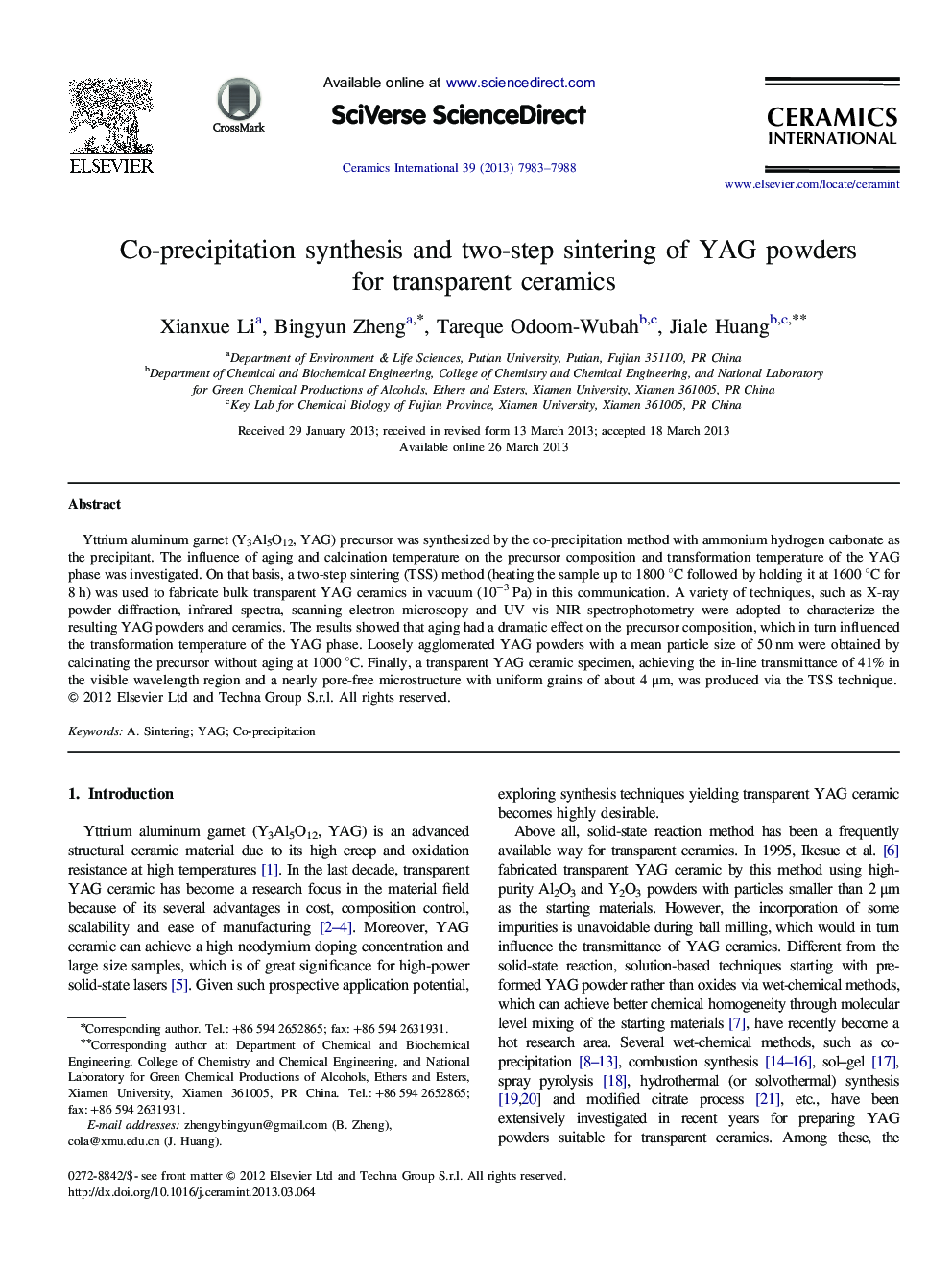| Article ID | Journal | Published Year | Pages | File Type |
|---|---|---|---|---|
| 10625697 | Ceramics International | 2013 | 6 Pages |
Abstract
Yttrium aluminum garnet (Y3Al5O12, YAG) precursor was synthesized by the co-precipitation method with ammonium hydrogen carbonate as the precipitant. The influence of aging and calcination temperature on the precursor composition and transformation temperature of the YAG phase was investigated. On that basis, a two-step sintering (TSS) method (heating the sample up to 1800 °C followed by holding it at 1600 °C for 8 h) was used to fabricate bulk transparent YAG ceramics in vacuum (10â3 Pa) in this communication. A variety of techniques, such as X-ray powder diffraction, infrared spectra, scanning electron microscopy and UV-vis-NIR spectrophotometry were adopted to characterize the resulting YAG powders and ceramics. The results showed that aging had a dramatic effect on the precursor composition, which in turn influenced the transformation temperature of the YAG phase. Loosely agglomerated YAG powders with a mean particle size of 50 nm were obtained by calcinating the precursor without aging at 1000 °C. Finally, a transparent YAG ceramic specimen, achieving the in-line transmittance of 41% in the visible wavelength region and a nearly pore-free microstructure with uniform grains of about 4 μm, was produced via the TSS technique.
Keywords
Related Topics
Physical Sciences and Engineering
Materials Science
Ceramics and Composites
Authors
Xianxue Li, Bingyun Zheng, Tareque Odoom-Wubah, Jiale Huang,
